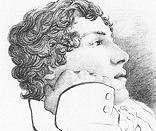Shakespeare's Othello- the Moor of Venice, first performed in 1604 is a master tragedy embodying the traditional qualities of severity, magnitude and emotion as defined by Aristotle. It is in Shakespeare's characterization of central character Othello that Elizabethan context truly begins to infiltrate the play. Othello is initially portrayed as an infallible and legendary war hero, a general in the Venetian army. It is during Act Four Scene 1 that Elizabethan prejudice finally controls the course of Shakespeare pen. "How shall I murder her Iago?" is the point at which Othello begins to embody the savage and animalistic stereotypical ethnic qualities bestowed upon his race in Elizabethan times. "I will chop her into messes" and the metaphor "my heart is turned to stone- strike it and it hurts my hand" show the once noble general, crippled by the context. In the time the idea of a superior and dignified Moor was a radical.
By lowering Othello to a basic level, Shakespeare is conforming to social norms. In this way he effectively represents context in his work.
Like Othello, Romantic Poet John Keats' 1819 masterpiece "La Belle Dame Sans Merci: A Ballad" was a product of its context. The Romantic Movement was inspired by the revolutions in France and America. Romantics reacted against impersonal, artificial emotion and conservative morality (ideals incidentally upheld by Elizabethan society) and embraced notions of freedom of emotion and feelings of spontaneity and originality. In keeping with these ideals, the courtship in "La Belle" is rapid. No sooner does the persona meet the lady of the mead "full beautiful- a faeries child" then he is whisked back to her Elvin grot "and there I closed her wild wild eyes with kisses four" Many critics also maintain that the poem is a reflection of Keats...


![From the Library of Congress: TITLE: Thos. W. Keene. Othello CALL NUMBER: POS - TH - 1884 .O7, no. 1 (C size) [P&P] REPRODUCTION NUMBER: LC-USZC6-58 (color film copy transparency) RIGHTS INFORMATION: No known restrictions on publication. MEDIUM: 1 print (](https://s.writework.com/uploads/9/94760/library-congress-title-thos-w-keene-othello-call-number-pos-thumb.jpg)